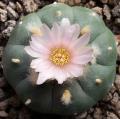
DMT-Nexus member
Posts: 212 Joined: 16-Oct-2016 Last visit: 10-Feb-2025
|
Hey guys, I stumbled upon this interesting piece of research: https://doi.org/10.5281/zenodo.154442I think it can be of great help to the community! Safe journeys, An1cca A harm-reduction approach to the isolation of harmine and its hydrogenated derivatives from Peganum Harmala seed in low-tech settings Mod wrote:Added title of paper to allow for for easier searching of this thread.
|
|
|
|
|

DMT-Nexus member
Posts: 4031 Joined: 28-Jun-2012 Last visit: 05-Mar-2024
|
Thank you for that. On page 28: Quote:On popular websites describing the separation of Syrian rue alkaloids, it is postulated that harmine can be separated from DHH on the basis of their different pKa, claiming that at a pH of 8,75, 92% of the harmine present and only 8% of DHH present will precipitate [Dmt-nexus 2016a, Erowid 2016a, Shroomery 2016, Mycotopia 2016]. The above experiment clearly contradicts this statement, showing that at pH 8,50 all of the DHH has already precipitated Hmmm, when I rise to pH9 then there is still a lot of yellow in the 'milk'. Only when rising to at least 11.5 then all yellow start becomming white, usually I rise to just above 12. I've always thought that this yellow (above pH 9) is the harmaline (DHH) that was not readily precipated as FB. pKa of harmaline is 9.8 , then how can it all be precipitated at 8.5? 
|
|
|

DMT-Nexus member
Posts: 212 Joined: 16-Oct-2016 Last visit: 10-Feb-2025
|
Well Jees, I'm not a chemist, but perhaps -the fact that harmala freebases precipitate out of solution causes them to 'leave the equation', thereby shifting their dissociation-equilibrium? -the nature and concentration of other ions present have an influence? This guy describes his protocol in great detail. This would enable us to replicate it and check for ourselves... Also, he studied the reason behind the 'bicarbonate-enigma' that some of us have encountered. Apparently, bicarbonate is able to precipitate quite a lot of harmaline as well. Repetitive precipitations (5) do seem to work around this problem. Note that here as well, the strict interpretation of harmaline's pKa value can not explain this. As to the nature of precipitates, even a cheap microscope can tell the difference between harmine's 'needles' and harmaline's 'ferns'. To see is to know  Anyone else any ideas on this topic?
|
|
|

DMT-Nexus member
Posts: 1263 Joined: 01-Jun-2014 Last visit: 10-Aug-2019
|
thx for sharing An1cca  dihydroharmine DHH = harmaline ???
|
|
|

DMT-Nexus member

Posts: 14191 Joined: 19-Feb-2008 Last visit: 22-Nov-2025 Location: Jungle
|
Interesting, makes me want to repeat a few experiments.. The whole pka/precipitation calculator we were using put forward by infundibulum is theoretical, not based on actual tests with those substances, and we know reality is always more complex than theory, so some variation is to be expected. Either way I have done two successive precipitations using the pH/freebasing measurements and it did work very well to separate harmine and harmaline, I've tested with GC-MS to confirm, cant remember the exact numbers (and another time with TLC). I've only done that twice though so it would be nice to repeat the experiments with more careful measurements and notes. Also pretty much anyone here could use TLC to test their own extractions/separations and not just depend on theory. Would be nice to get more tests from different people, and also if the author would use some other method appart from melting point and looking at the crystal structure. Either way I'm not a chemist and am always learning, so all this information is good, and im happy that people look into it and share their results  Thanks for sharing!
|
|
|

DMT-Nexus member
Posts: 1263 Joined: 01-Jun-2014 Last visit: 10-Aug-2019
|
Frederick wrote:Byproducts that precipitated could be easily removed by washing with dilute base. One (1) thing we didn't understand (amongst others) was: is there no contamination of zinc byproduct in the final THH precipitation? He speaks of impurities that the THH crystals form around?
|
|
|

DMT-Nexus member
Posts: 4031 Joined: 28-Jun-2012 Last visit: 05-Mar-2024
|
endlessness wrote:...so some variation is to be expected... I'd like to sing along with that tune any day, but estimating that 5% Harmaline precipitates at pH 8.5 or 100% is a very strange bird of 'variation'. Once I dropped stiff lye water in (it was 4 Mol at least), drop per drop or just a little above that, swirled and measured end pH. It occurred to me then that the end pH after the swirl is a general result measure, but what happens when a drop falls in, is that around the drop one creates a little spot with a peak high pH for a second, and due that there possibly precipitates harmaline very easily very locally for an instant. Even after good swirling and say general pH is like 8 then some of that harmaline that was formed around the high peak pH spot likes to remain in its solid state (presumption!! of a hysteresis of some kind when it comes to that). So I could picture in my fantasy more harmaline in precipitated state than the expected amount of 1.5% at post swirling pH status 8. But this effect, if any, can hardly be supported with sodium bicarbonate as that is unable to create very local spots of high peaking pH when added, was my thinking. Feeling unsure about all this but just throwing it in the group for reflection which I would welcome very much.  It is a very nice document with another angle than we're used to, glad we had it offered 
|
|
|

DMT-Nexus member
Posts: 212 Joined: 16-Oct-2016 Last visit: 10-Feb-2025
|
Another observation I have made in the past was that sodium bicarbonate could not precipitate DHH out of solution. However, in a combined harmine/DHH solution it succeeded in precipitating a lot of it. And when harmala freebases are filtered out of solution, it takes some base (pH-differential) to restart the precipitation from the mother-liquor... I think the author observed the same thing when looking at the spikes in his titration-diagram. Nature works in mysterious was... Concerning the THH synthesis, even if zinc-salts are present as impurities, their amount seems negligible giving the narrow melting ranges that are identical to the sublimed Thh-melting ranges. Let me get that old bottle of vinegar out and see what THH's real importance is in ayahuasca-brews 
|
|
|

DMT-Nexus member
Posts: 4031 Joined: 28-Jun-2012 Last visit: 05-Mar-2024
|
Intezam wrote:...is there no contamination of zinc byproduct in the final THH precipitation? ... Indeed, nexus has bothering a lot here about removing of the formed zink salts while in the document there is no mentioning of it. Same recipe as in the document point 2.5 at page 8: I've put {93gr demin water + 7 gr glacial acetic acid + 3 gr zinc} in a vial without anything else, going to filter + base that later to see the result.
|
|
|

DMT-Nexus member
Posts: 212 Joined: 16-Oct-2016 Last visit: 10-Feb-2025
|
...and then, when a precipitate should appear, it can be filtered and its solubility in dilute base can be determined. If it is soluble, or if no precipitate should appear at all, the described method is indeed correct and easily applicable! Good work Jees, let us know what you end up with!
|
|
|

dysfunctional word machine

Posts: 1831 Joined: 15-Mar-2014 Last visit: 26-Mar-2025 Location: at the center of my universe
|
What a nice find and what a nice article. After a preliminary quick read I do have some comments. I would have really loved to have seen a better analysis done on the results. GC/MS shouldn't be too hard for researchers with institutional affiliations, but even if this was only a personal research project, TLC would have been easily within reach. The author did after all have equipment to do a vacuum sublimation purification. The author uses much more than 100 gram NaCl per liter for saltings. For the initial salting 234 g/l I can understand, but in all of the recrystallizations for purification the author uses 175 g/l. Why? How was the residual salt in the final hydrochloride crystals measured? On page 12 they state: Quote:The final harmine- and DHH-freebases were left to dry and weighed 36,4g or 48% of the total extracted alkaloid mass. I feel that this finding validates the reservations that I had made in earlier threads on easy rue extractions about skipping Manske saltings ( ex1 , ex2 ) The author of the paper claims to have found that only half of the total freebased alkaloids are harmalas. Finally on page 11: Quote:2.8 Disposal of reactants
When all experiments had been conducted, the reactants were destroyed by pyrolysis. They smoked it all?
|
|
|

DMT-Nexus member
Posts: 212 Joined: 16-Oct-2016 Last visit: 10-Feb-2025
|
I agree with Pitubo that GC/MS results would nicely complement this research. I've seen in the thread about zinc-acetic acid THH synthesis that Endlessness, Infundibulum and The Traveler were able to perform a GC/MS analysis on their reactants. Possibly they could repeat this based on the protocols described in the paper?
I studied the paper some more and actually, the author never ends with hydrochloride salts, only freebases. Except for one time, when the hydrochloride was synthesized using hydrochloric acid in IPA. Therefore, determining the sodium chloride contamination was not necessary. At least, that is how I understand it.
Pitubo, harmala freebases sublimate quite easily. Once I succeeded in sublimating near 100mg of harmine just by warming a test-tube that was pulled 'vacuum' with a wine-preserver (300mbar).
@ Jees: looking forward to your results!
|
|
|

DMT-Nexus member
Posts: 4031 Joined: 28-Jun-2012 Last visit: 05-Mar-2024
|
An1cca wrote:...@ Jees: looking forward to your results! I know  Had to let it sit for 22 hours now due time scheme stuff, but going to filter soon.
|
|
|

DMT-Nexus member
Posts: 4031 Joined: 28-Jun-2012 Last visit: 05-Mar-2024
|
This little test is indicative only, it does not pretend to be hard science. So the {100gr 7% acetic acid + 3gr zinc} was filtered after 22 hours, mainly just sitting (only 4 times swirling), at a lukewarm temperature so no serious heating done. The liquid was very transparent but looking very closely one could see some kind of yellow-trace yet very hardly noticeable. Choice of base: 8mol/L lye because it would enable to add strong base to check if the precipitates really turn liquid again as suggested here. endlessness wrote:...Another option would be to attempt using excess sodium hydroxide. The theory says that when excess sodium hydroxide is added, zinc hydroxide becomes sodium zincate, which will be soluble in the solution while THH would be insoluble and precipitate. Then one can just filter and have THH without zinc... So we hope to acknowledge "the theory". Ph meter was re-calibrated at 7 and 9, but seems to stall at 13.10 and goes no higher. At 8mol/L it should say pH 14 but refuses to rise above 13-ish, it is a cheap probe so I think it's that.  Start pH is 3.13 (theoretically should be 2.85) Lye was added 1 ml at a time, then pH measured. Between 1 and 13 ml lye added the pH rises really slow, but starts to rise strong after that. At 14 ml lye added, pH 5.8 , first signs of mist forms. At 15 ml lye added, pH 7.34 , serious precipitation forms. At 16 ml, pH 10, viscosity rises and liquid start to stick on the glass walls, see FIRST picture. At 19 ml, pH 12.88, any further the pH meter stalls at 13.10 At 24 ml, first signs that things change, liquid start to loose viscosity. At 37 ml, a lot of the hard ZnOH --> liquid sodium zincate, liquid became watery again, see AVI attachment. Probably not interesting but adding more lye slowly the pH declines to just below 13, I suppose it's a side effect somehow. To make all ZnOH "disappear", had to add 60 ml lye in total. See SECOND picture. I wonder if THH would be compromised in this much lye. pH was brought back by adding water + HCl to around where most precipitate was seen, around just above pH 12. The supposed ZnOH filtered, dryed, see pic, weighted 335 mg. Thus not negligible IMHO. * * * The OP paper precipitates the formed THH with ammonia, not lye. * * * Now, a coffee 
|
|
|

DMT-Nexus member
Posts: 212 Joined: 16-Oct-2016 Last visit: 10-Feb-2025
|
Excellent work Jees! Now we know sodium hydroxide can be used as a base for precipitation, but that we need to filter at a very high pH (where the stability of THH may become an issue?). Another alternative would be to check if the precipitate you got is soluble in dilute base. In that case, it can be washed out of the insoluble THH. Could you check this with ammonia or sodium carbonate? These are the bases that were used in Van Der Sypt's paper. Actually, I have just dropped 6 grams of zinc powder in 200ml of acetic acid 7% to let it react for about a day and then precipitate half of it with sodium carbonate and the other half with ammonia. Looking at the melting points in the paper, sodium carbonate precipitation might even produce more pure THH. I also have some post-Manske rue-extract. I plan on applying the pH-selective precipitation from the article on it. I'll post some pictures (solution + pH-reading) of this process shortly. Exciting! An1cca attached the following image(s):  6g Zn in 200ml AcOH 7pct.jpg (28kb) downloaded 1,715 time(s).
|
|
|

DMT-Nexus member

Posts: 14191 Joined: 19-Feb-2008 Last visit: 22-Nov-2025 Location: Jungle
|
Thanks a lot for the efforts and sharing your experiments, friends 
|
|
|

dysfunctional word machine

Posts: 1831 Joined: 15-Mar-2014 Last visit: 26-Mar-2025 Location: at the center of my universe
|
Interesting research! Some comments: Jees, I would personally never subject a glass pH electrode to high concentrations of lye. I fear that the strong base will damage the sensitive thin permeable glass of the electrode. You would do well to wash your electrode diligently and recalibrate it more often after such a harsh treatment. If I would want to make an accurate pH measurement of a solution with an extreme pH with delicate equipment, I would make a 100 or 1000 fold dilution in distilled water and measure that. Or perform a titration and only insert a probe near the expected endpoint. With regard to the zinc salt precipitate, it seems obvious to me that the use of ammonia as a base is the best way to go. Zinc ions form a soluble ammine complex in the presence of excess ammonia. Rapid addition of ammonia of sufficient strength will give the zinc ions not even enough time to precipitate as solid hydroxides. https://en.wikipedia.org/wiki/Metal_ammine_complexhttp://www.chemguide.co.uk/inor...complexions/aquanh3.htmlTrying to filter solutions made strongly basic with lye is difficult, because it will damage glass frits and make paper filters turn gooey.
|
|
|

DMT-Nexus member
Posts: 212 Joined: 16-Oct-2016 Last visit: 10-Feb-2025
|
Very useful info, Pitubo! Actually, even if lye would prove to be an equally effective basifying agent, its use should not be promoted if an alternative is available. Perhaps this is what the author means by a 'harm-reduction' approach? And as Pitubo states, ammonia might prove to be an even better choice. Or perhaps sodium carbonate, which is a lot less dangerous than its hydroxide brother...We'll see in a day, for the moment hydrogen bubbles are constantly generated in the beaker. Man, perhaps THH synthesis might just be the answer to the ecological crisis! 
|
|
|

DMT-Nexus member
Posts: 4031 Joined: 28-Jun-2012 Last visit: 05-Mar-2024
|
Thanks pitubo for the hints. I do rinse after use and put it in pH 7 calibration fluid right after, it immediately went 7 on display. In the OP paper: Quote:...Byproducts that precipitated could be easily removed by washing with dilute base... I wonder how he checked that. Anyway, what must I understand with "dilute base"? I think it means not so much the base pH value itself but rather the very low concentration of the elements like alks and ZnOH, like in a large volume of the base liquid, is that right? I do the washing after I'm sure how to do it properly. Best pH? Now if ammonia could do the trick on it's own, with the suggested dilute-base washing like in the paper, then why should one bother any longer about that whole ammonia chloride recipe (as followed up by Nitegazer here)? I really hope the OP paper is right and we have an easier protocol.
|
|
|

DMT-Nexus member
Posts: 385 Joined: 20-Mar-2016 Last visit: 26-Sep-2024
|
Great thread. Ive been wanting to try the harmaline to thh reduction but like most people here was worried about the zinc contamination.
Now Jees has proved that excess sodium hydroxide causes the zinc hydroxide to redissolve, and, as Pitubo says, excess ammonia will have the same effect, it should be simple enough to perform the reduction using easily available reagents and with no contamination issues.
Thanks to all of you. Hope I can find some time and space to try this myself.
Just one thing, when chemists talk about 'excess' base, does this just mean more than is needed to reach the maximum pH? How much more?
|